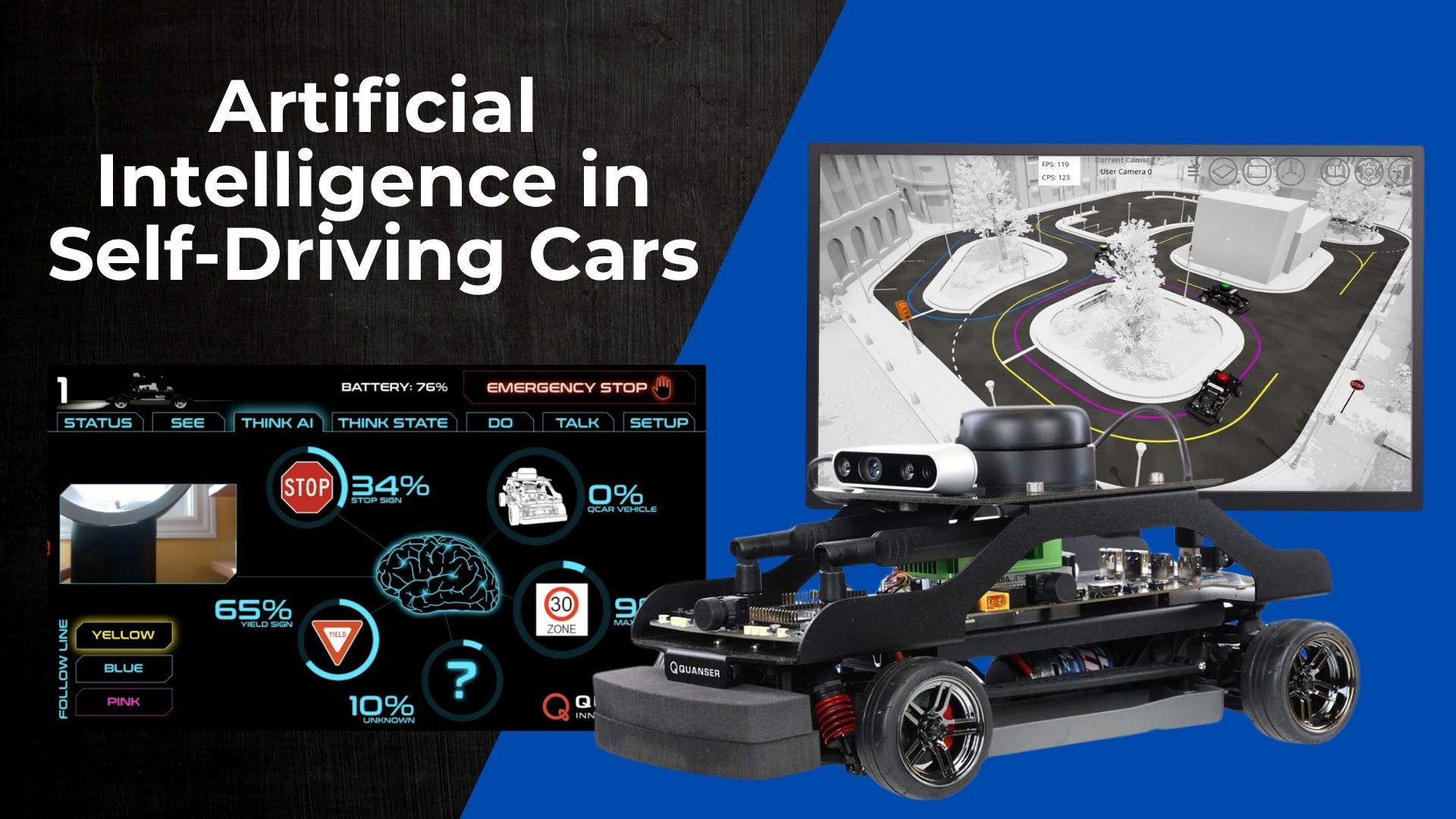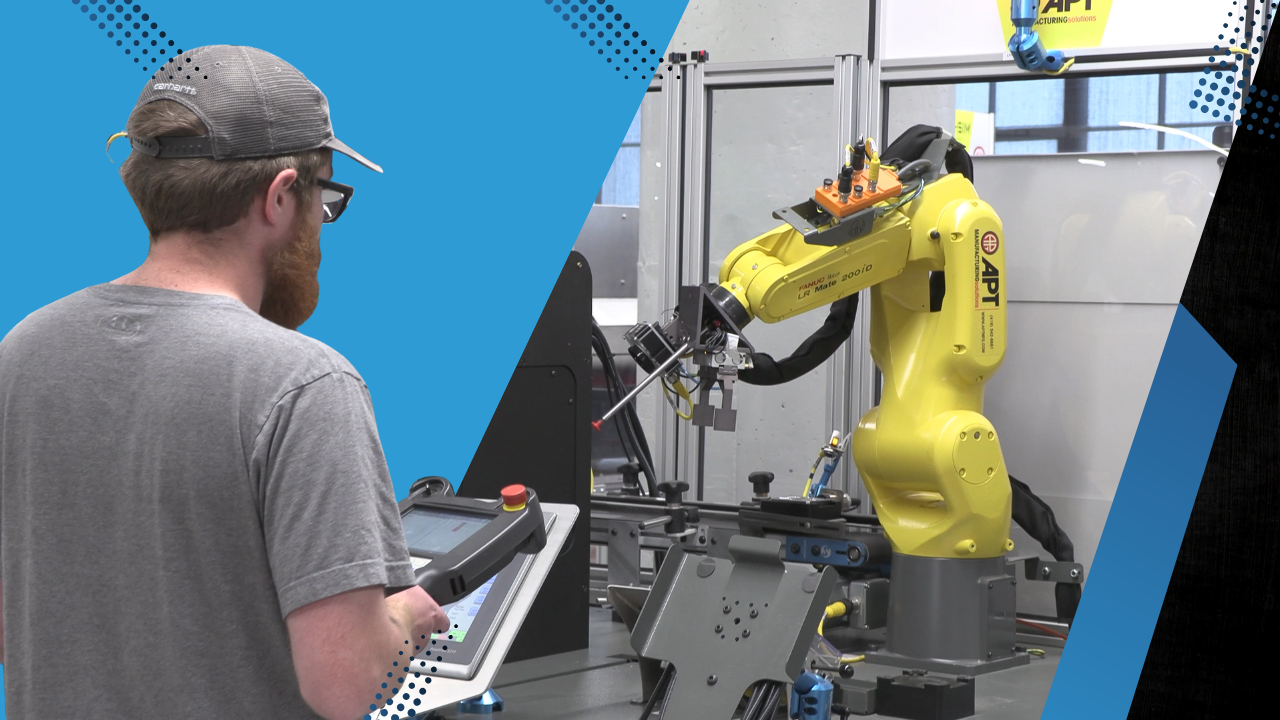
The Technology Educator’s Guide to 3D Scanning
From engineering classrooms to art preservation labs, 3D scanning has become an essential tool in technical and post-secondary education. By
Step into any advanced manufacturing facility today and you’ll see rows of precision machines fabricating parts that used to take days, now done in hours. Products go from idea to reality in record time. This is the new frontier of design and fabrication, and it’s powered by artificial intelligence.
AI is fundamentally transforming how we design, engineer, and fabricate. But most students still associate AI with chatbots and image generators.
In reality, AI is embedded within the hardware & software, and is crucial for the speed, accuracy, and innovation demanded by industry. Its use in 3D design and fabrication technology means artificial intelligence is impacting how we create physical things, not just digital content.
Now, students can be part of this transformation.
Let’s explore how modern classrooms are training learners on AI-powered 3D scanning, digital design, and 3D printing, and why these skills are vital for tomorrow’s workforce.
Design and fabrication have always been complex. Traditionally, creating a new part meant starting from scratch: measuring an object, drawing it manually, modeling in CAD software, prototyping, revising, and finally, producing. But in today’s advanced manufacturing environments, that process is condensed and enhanced through automation and machine intelligence.
It starts with 3D scanning. Instead of a ruler and caliper, modern engineers use handheld scanners to instantly capture real-world objects in high detail. But capturing an object is just the beginning. The real power lies in what happens next.
Thanks to embedded AI, these scanners can take millions of data points across the surface of an object and create an exact 3D digital rendering. AI algorithms assess surface textures, detect geometric patterns, automatically correct noise, and optimize point clouds to prepare for CAD conversion. Instead of manually stitching together scan data or trying to interpret raw point clouds, engineers get clean, editable meshes in a matter of seconds.
From there, designers import those AI-processed scans into CAD software to edit, reverse-engineer, or redesign parts. Whether it’s customizing a bracket for a unique application, modifying a prosthetic for a better fit, or adjusting a design for additive manufacturing, CAD is where creativity meets precision.
Finally, the process ends with 3D printing, bringing digital designs into the real world through fused deposition modeling, resin curing, or other additive processes. What once required days in a machine shop now happens in hours on a desktop printer.
This is the modern design-to-fabrication workflow, and here’s how schools are teaching it.

At the center of this revolution are tools like the Creaform Peel 3, a professional-grade handheld scanner that’s as intuitive as it is powerful. With AI-driven algorithms working behind the scenes, students don’t need to be scan experts to create high-quality 3D models. They simply scan the object, and the Creaform.OS software cleans, aligns, and optimizes the data in real time.
From there, learners transition to CAD design where they can modify existing parts, create entirely new models, or use generative design principles. Many of today’s CAD platforms leverage AI to recommend part geometries, flag design issues, or generate assemblies based on function and material constraints.
And when it’s time to fabricate, B9Creations 3D printers offer industrial-grade additive manufacturing capabilities in a compact, classroom-ready footprint. These systems are designed for precision and speed, perfect for printing prototypes, custom jigs, medical devices, or even jewelry molds. With their growing presence in industry, learning to use these printers gives students a competitive advantage.
Together, these technologies make up a full design cycle, from physical object to digital model to physical object again. And at every step, AI is working quietly in the background to improve accuracy, reduce manual labor, and accelerate production.
One of the best things about this design-and-fabrication pathway is that it introduces students to real-world AI applications without the need to learn code.
Learners don’t need to write neural networks to use the AI in a Peel 3 scanner. They don’t need to understand deep learning to benefit from intelligent CAD suggestions. And they don’t need to train models to print with B9Creations’ systems. Instead, they’re interacting with AI as users, just like they will in future jobs. They’re making real design decisions, working with data, and understanding how intelligent tools impact the design process.
This is what it looks like to move from large language models to working with physical artificial intelligence. And it makes the learning accessible to a much broader range of students, from future engineers to aspiring artists, healthcare workers, or tradespeople.
This kind of exposure builds intuition. Students begin to understand how AI thinks, how it processes visual data, how it cleans scans and how it generates suggestions. That intuition will be critical in future careers, whether they become designers, technicians, engineers, or entrepreneurs.

This AI-powered design cycle also showcases an important concept in modern automation: the edge-to-cloud continuum. Here’s how the edge-to-cloud continuum works:
This combination of local AI processing and cloud-enabled design mirrors how modern companies operate. Students learn how data moves through a workflow, how different tools integrate, and how decisions made at each step affect the final product.
And because the tools they’re using (like the Creaform scanner and B9Creations printers) are the same ones used in industry, they graduate with a portfolio of real-world skills.
This matters. In a world where speed-to-market and product customization are key competitive advantages, employers need workers who understand the digital thread. They’re looking for people who can bridge physical and digital, who can move seamlessly between scanning, CAD, and printing, and who understand how AI enhances design & fabrication.
As AI transforms every part of the economy, educators are being asked to prepare students not just for today’s jobs, but for the next decade of innovation. Design and fabrication is one of the most exciting ways to interact with physical AI.
This is all taught in high schools through Discover AI, a scalable, hands-on and student-driven AI program that teaches students applied AI skills in different technology areas, including 3D Design & Fabrication. Learn about Discover AI to see how you can bring applied artificial intelligence into your design courses.

From engineering classrooms to art preservation labs, 3D scanning has become an essential tool in technical and post-secondary education. By

On a Tuesday morning in Phoenix, a visitor on business orders an Uber to take them to a conference, and

On the edge of downtown Waterloo, Iowa, there’s a historic site where the first John Deere tractor factory changed the